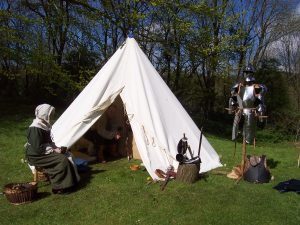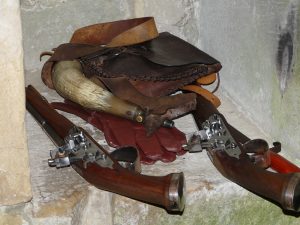 During the seventeenth century cavalry were seen as being superior to the foote. In pitched battles the cavalry would have formed up on the flanks of the foote, creating opposing wings of the armies. Typically pitched battles would have started with cavalry actions before the foote closed into battle.
During the seventeenth century cavalry were seen as being superior to the foote. In pitched battles the cavalry would have formed up on the flanks of the foote, creating opposing wings of the armies. Typically pitched battles would have started with cavalry actions before the foote closed into battle.
In principal there were two types of cavalry man. The first was the heavily armoured cuirassier, covered from head to toe in heavy articulated armour. This type of cavalryman was particularly expensive to equip and mount. Therefore this type of cavalry unit was rare during the civil war. More typical was the lighter cavalry, which would have worn an open faced helmet and a back and breast plate or buff coat for protection.
Within siege situations the cavalry troopers would often dismount and fight on foot when storming a fortification, using carbines, pistols and swords as their weapons. Horses would have been a valuable commodity and there are numerous instances of horses being raided and stolen from garrisons. The loss of a horse by a trooper would also have been a punishable offence.
